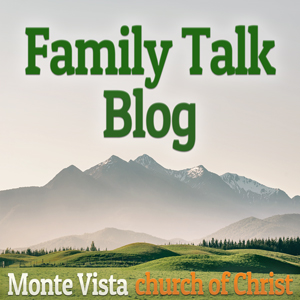What We Believe — Scripture
In the first century of the Christian era, the term “Gnostic” came to denote a heretical segment of the Christian community. Among early followers of Christ, some groups described themselves as having not simply a belief in Christ and his message but a “special witness” or apocalyptic understanding of the divine. They taught that this experience, or gnosis, set the faithful follower of Christ apart. Their “self-proclaimed” confidence in being a follower of Christ opposes John’s description in (1 John 2:3-6). “By this we know that we have come to know Him, if we keep His commandments. The one who says, “I have come to know Him,” and does not keep His commandments, is a liar, and the truth is not in him; but whoever keeps His word, in him the love of God has truly been perfected. By this we know that we are in Him: the one who says he abides in Him ought himself to walk in the same manner as He walked.”
What we know of the “Secret Knowledge” Gnostics claimed to possess comes from texts, some of them only small fragments, written in Coptic, the language of Egyptian Christians. While several methods for defining and categorizing Gnosticism have appeared over the years, none offers a comprehensive picture. That is because the different texts give a cryptic and sometimes contradictory view of their beliefs. There are four factors commonly used to explain Gnostic belief.
First, Gnosticism emphasizes that “direct, personal and absolute knowledge of the authentic truths of existence is available to human beings.” Also, the attainment of such knowledge is the supreme achievement of human life. Today, this assumption is the basis of meditation in Yoga and Buddhism. And in a similar fashon “praying through” is the rationale of Mormonism and other religious orders that use books other than the Bible. The New Testament opposes this in that faith comes by hearing – “But what does it say? “the word is near you, in your mouth and in your heart”—that is, the word of faith which we are preaching, … Just as it is written, “how beautiful are the feet of those who bring good news of good things!” However, they did not all heed the good news; for Isaiah says, “Lord, who has believed our report?” So faith comes from hearing, and hearing by the word of Christ” (Romans 10:8-17). The necessary knowledge is presented by the witnesses of Jesus whom He sent out ( 1 John; Colossians 1:21-23, 2:1-9)
Second, Gnosticism is knowing by and of an inner self, inside the physical body, and that knowledge leads to freedom. The ultimate understanding of this uncreated self is realizing that the inner self is the real being and the outer body is not real and is probably evil. This is seen today in the transgender belief that the body must change to conform to the inner self. This thought is opposed to the God-created body and the spirit given to it by the creator. (Genesis 1 & 2). This view of life also allows for the rejection of a new life, a new living human growing inside a mother, and the current acceptance of abortion. Gnostic thought says to change the body, while the Bible teaches a change of spirit.
Third, the Gnostic experience was mythopoetic (the beliefs and attitudes of a group or culture expressed in symbols, stories, metaphors, and rituals). Gnosticism looked for knowledge in visions. Their knowledge cannot be described by logical reasoning or dogmatic statements. That means that there is no need for the “faith once delivered” and that the divine revelation of creation and plan of salvation was, and is, irreverent to an accurate knowledge of the divine. However, the New Testament teaches that we cannot know God without Him telling us of Himself. (Hebrews 1; John 5 thru 8), etc.
Fourth, the Gnostic defined God as a dyad or duality. While they agreed with the unity and integrity of the Divine, Gnosticism imagined God as a dyad of masculine and feminine elements. Though their language is specifically Christian, Gnostic sources often use sexual symbolism to describe God. One group of Gnostic sources claims to have received a secret tradition from Jesus through James and Mary Magdalene. Members of this group prayed to both the divine Father and Mother. Modern adherents to this belief have encouraged prayers to Her instead of Him when referring to God. Placing a female on the throne of heaven made putting women in place of men in worship a logical step. More will be discussed on this subject when we review the Gnostic Gospel of Mary.
By declaring a secret knowledge, and no need to study the Bible to know God and the way to salvation, the Gnostics opened the doors to accept anything in the name of religion. How does that compare to Paul’s statement in Romans? “For I am not ashamed of the gospel, for it is the power of God for salvation to everyone who believes, to the Jew first and also to the Greek. For in it the righteousness of God is revealed from faith to faith; as it is written, “but the righteous man shall live by faith“ (Romans 1:16-17).
Do you believe the testimony of the witnesses to Jesus’ teachings?
